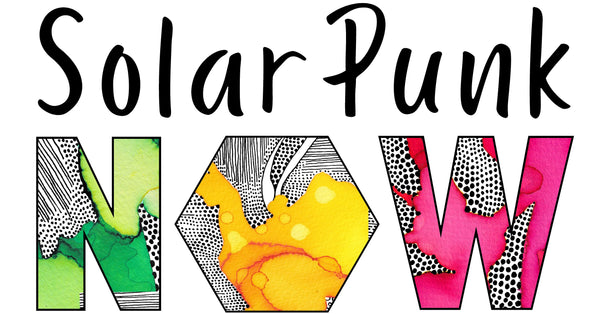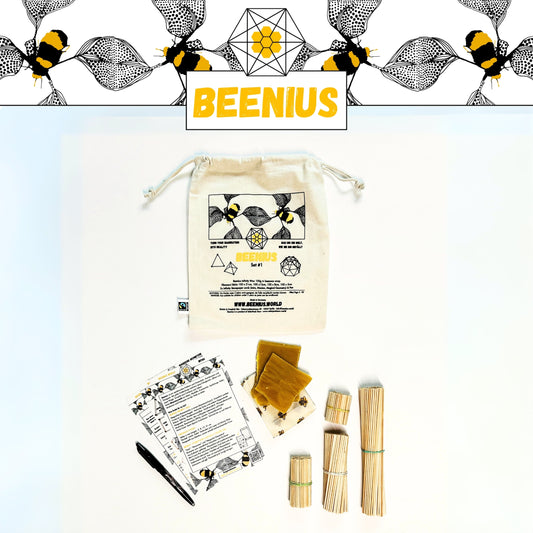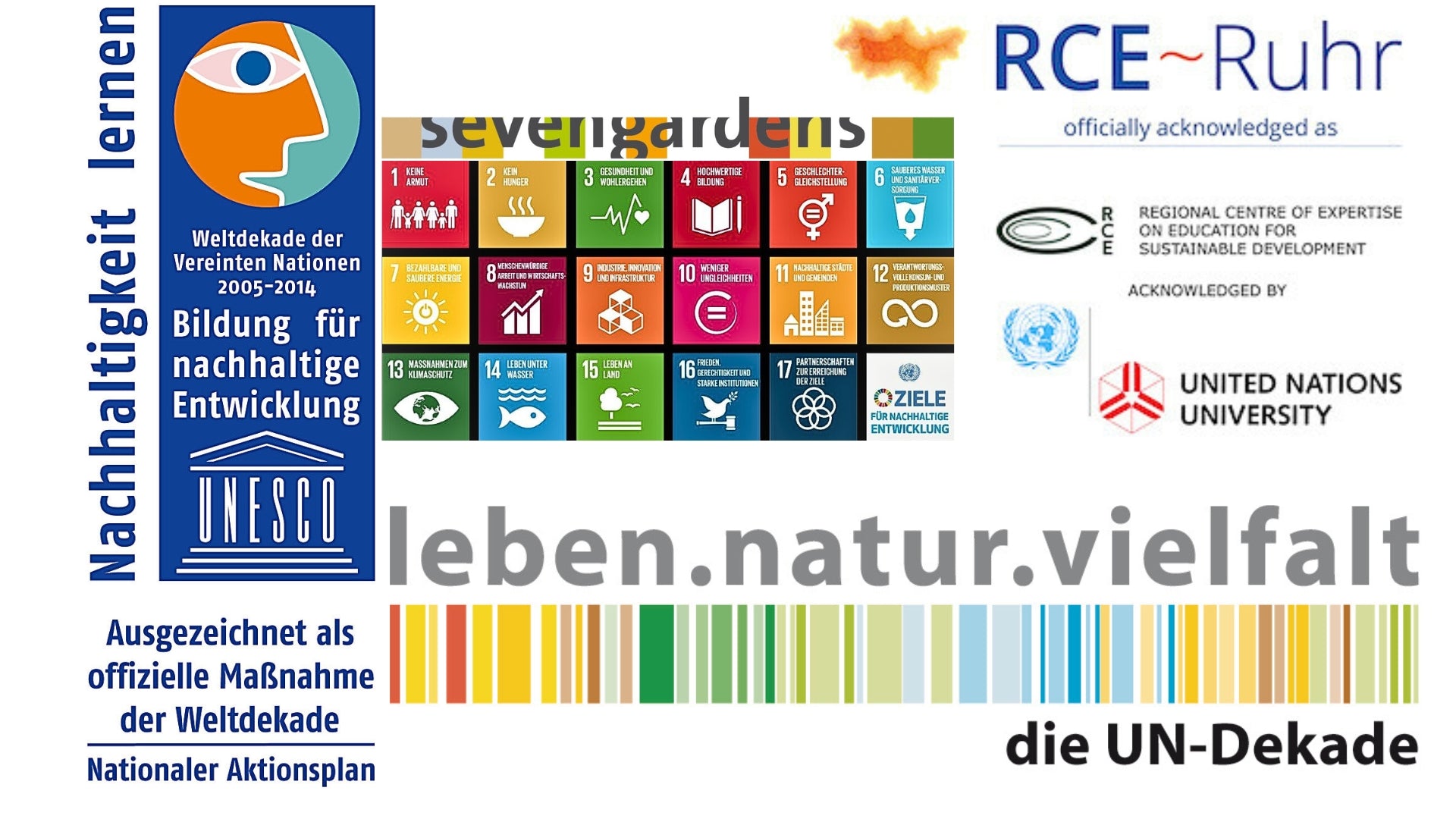
The Infinity Tools are perfect for enhancing traditional teaching in a creative, sustainable and interactive way.
With the reusable materials Beenius and Infinity Stonepaper, students can learn in a playful way by building models, creating sketches and trying out solutions. These tools not only promote spatial thinking and fine motor skills, but also the creativity and problem-solving skills of students. Through project-based work, they develop a deep understanding of different subjects and discover how what they have learned can be applied in the real world. At the same time, the tools raise environmental awareness by using sustainable materials and conserving resources.
Whether in the classroom or outdoors, Infinity Tools offer flexible learning opportunities that support both teamwork and independent discovery – without a lot of supervision, but with plenty of room for developing potential.
General application examples
Math and geometry in exciting
Mathematics becomes an exciting adventure with Infinity Tools . Isaac Newton said: "Geometry is, of all the other sciences, the one which most easily leads to infallible certainty."
Beenius allows students to build geometric shapes such as cubes or pyramids to make abstract concepts tangible. These models can be assembled into more complex structures, giving students hands-on experience of how math and geometry are applied in the real world.
Infinity Stonepaper serves as a flexible workspace for developing solutions together. Students learn to apply area and volume calculations to their own designs and discover how geometric principles can be found in architecture and everyday life.
Making natural sciences tangible - for biology, physics, chemistry and co.
The Infinity Tools make teaching biology, chemistry and physics practical and understandable. Beenius makes it easy to build biological structures, chemical compounds and physical models. This allows students to understand organs, molecules or forces in a clear way. Infinity Stonepaper offers a flexible work surface for planning experiments and recording results.
Interdisciplinary natural sciences
Infinity Tools also offer a wide range of application possibilities in interdisciplinary natural sciences, geography or astronomy. Students can build geological formations, planetary systems or climate models with Beenius and put theory into practice. Infinity Stonepaper supports the visualization and adaptation of complex processes, promotes creative thinking and connects theory with the real world.
Projects in free periods
According to estimates by the German Teachers' Association, the number of missed lessons amounts to around 3 to 5 percent of all lessons. This corresponds to several million teaching hours per year.
There are many reasons for class cancellations: teacher absence due to illness, training courses or a lack of substitute teachers.
With Infinity Tools, free periods at school can be made active and stimulating without supervision. Instead of filling the time with passive films, students can explore new challenges in a playful and independent way.
In this way, the free period becomes an opportunity to integrate self-directed project-based learning into everyday lessons.
Environmental education
The Infinity Tools are perfect for sustainability and environmental projects. Beenius , made from sustainable materials, enables students to build models such as energy-efficient houses or ecosystems. With Infinity Stonepaper , a reusable paper made from recycled limestone, they can sketch their concepts in a resource-saving way. This gives them a hands-on experience of how ecological principles are translated into real solutions, while promoting awareness of circular economy and environmental protection.
Learn languages
The Infinity Tools make language and foreign language lessons lively and creative. With Beenius, students can, for example, build characters, places or scenes to tell stories or reenact dialogues. This makes language tangible and promotes understanding of narrative structures and vocabulary in a playful way. In groups, they can also develop interactive language games in which terms in the target language are represented and guessed using constructed symbols - this ensures fun and active participation.
The tools are also extremely helpful in foreign language lessons. With Infinity Stonepaper, students can write down word fields, mind maps or even grammar rules and revise them as often as they like. For younger students, Beenius can be used to create vocabulary games in which words are visualized in the new language. Older students can sketch dialogues on Infinity Stonepaper and practice them directly in role-plays. The combination of creative building and writing ensures that language is learned in a modern and practical way - ideal for all ages and learning levels.
This is what lessons with Infinity Tools can look like:
Preparing lessons (with AI support)
With Infinity Tools Custom GPT you can prepare lessons quickly and easily. Follow these steps:
-
Define learning objective and context : First, specify the subject or topic you want to teach (e.g. geometry, sustainability) and the context (e.g. age of students, available time and materials). The GPT will then make suggestions on how to use Infinity tools such as Beenius and Infinity Stonepaper .
- Customize suggestions : Choose from or customize the suggestions. You can decide whether the focus should be on group work, individual learning, creative projects, or problem-solving tasks.
- Prepare materials : The GPT provides you with detailed instructions on which Infinity Tools you need and how to use them. This includes building instructions with Beenius , as well as ideas for using Infinity Stonepaper for sketches or notes.
-
Implementation and flexibility : The GPT offers tips for adapting your lessons flexibly, be it for a shorter or longer period of time or for certain levels of difficulty.
In just a few minutes you will have a tailor-made lesson that is both practical and sustainable!
Example: Bridge building lesson (45 minutes)
This bridge building challenge with Beenius brings the fascination of bridge building apps into the classroom and promotes understanding of physical principles such as stability and weight distribution through practical application. At the same time, group work strengthens creativity, patience and perseverance - and the feeling of success when the bridges are built is great!
And this is what a lesson unit can look like:
Introduction (5 minutes) : Start with a short introduction to the topic of bridge building. Bridge building apps are among the most popular digital applications for many young people...here it is now being implemented in real life.
If necessary, give students some inspiration from real-life bridges.
Divide into equal groups.
Introduce a challenge: Students are asked to build a bridge that spans either 30 cm, 50 cm or 1 meter and is stable enough to carry small objects (e.g. a calculator).
Preparation (5 minutes) :
Each group measures the distances.
Provide a Beenius set (bamboo sticks and beeswax balls) for each group.
Distribute Infinity Stonepaper and markers to each group to sketch ideas and take notes.
Bridge Building Challenge (20 minutes) :
Provide a Beenius set (bamboo sticks and beeswax balls) for each group.
The students begin to build their bridges with Beenius.
During construction, students try out different approaches, adapt their designs and learn in a playful way how stability and weight distribution work.
Infinity Stonepaper helps students quickly sketch ideas and plan the structure.
Presentation and reflection (10 minutes) :
Once the bridges are finished, each group presents their construction and tests it by placing a small object (e.g. a calculator) on top.
The teacher moderates the presentation and gives feedback on construction, stability and creativity.
Final reflection: What did the students learn about bridge building, teamwork and physics principles?
Clean up (5 minutes) :
The groups dismantle their bridges, stow the Beenius rods and wax in the bags. Infinity Stonepaper is wiped off and rolled up.
Example: The lever law (45 minutes)
Learning objective: Students understand the lever law (force x force arm = load x load arm) and apply it practically by building and testing various lever constructions with Beenius.
Preparation:
- Beenius sets for each group to build lever models.
- Infinity Stonepaper and markers for sketching lever models and calculations.
- Small weights (e.g. calculators, rulers) to load the levers.
Implementation:
- Introduction (5 minutes) :
Briefly explain the law of the lever: “A lever is a simple mechanical tool in which a smaller force can move a larger load if the lever arm is long enough.”
Draw a simple lever model on Infinity Stonepaper and illustrate the principle using the force arm and the load arm.
2. Planning and sketching (10 minutes) :
The students form groups and are given the task of building a functioning lever with Beenius.
On Infinity Stonepaper, they plan their lever by sketching the force and load arm and estimating the weight of the load.
Each group decides whether they want to build a one-sided or two-sided lever.
3. Construction and experimentation (15 minutes) :
The students implement their lever plan with Beenius. They attach the rods, objects and wax connections so that the lever is stable and can be tested.
Once the levers are finished, they test their models with different weights, observing how the position of the force arm affects the force required.
They record their observations on Infinity Stonepaper and use the law of levers to calculate whether their models conform to the rules of physics.
4. Presentation and reflection (10 minutes) :
Each group presents their lever, explains the construction and shows how the lever works.
The students compare their calculations and observe which levers were particularly efficient and why.
Finally, the students briefly reflect on what they have learned about the lever law and its application.
5. Clean up (5 minutes) :
The Beenius models are disassembled, rods and wax are packed into the bags and Infinity Stonepaper is wiped off.
Example: Storytelling for foreign languages (90 minutes)
1. Introduction and task (15 minutes)
- Objective : Students understand the purpose and basic structures of storytelling.
- Explanation : The teacher briefly introduces the task and explains the structure of a short story (introduction, main part, conflict, solution). Terms such as setting , character development , and plot twist are explained.
- Example story : A short example story is read together in class and the structure is analyzed. The elements that will later be used in the students' own stories are discussed.
- Task : Each group should develop a short story in the next 75 minutes, which they will later present to the class. The story should be visually supported by Beenius models and planned and sketched on Infinity Stonepaper.
2. Planning and storyboarding (20 minutes)
- Developing Story Ideas : Students form groups and begin to work together to develop an idea for their short story. They must agree on characters, setting, and plot.
- Sketching a storyboard : On Infinity Stonepaper, they create a storyboard. They plan the most important scenes, character developments and conflicts. They visually sketch out how they want to present the plot and decide which scenes or characters they want to portray with Beenius.
- Teacher Support : The teacher goes from group to group, providing feedback on ideas and ensuring that all students develop an understanding of the story structure.
3. Model building with Beenius (30 minutes)
- Modeling characters and scenes : Groups begin to model their main plot elements, characters or settings using Beenius. They can physically represent characters, key scenes or symbols.
- Parallel to story development : While the models are being created, the students develop dialogues and scenes in their story. They write down on Infinity Stonepaper key points or important phrases that they want to use later in their presentation.
4. Presentation and feedback (20 minutes)
- Group presentation : Each group presents its story to the class. Students tell their story in English while using their Beenius models as a visual aid, making the storyline come alive and tangible.
- Feedback : After each presentation, the other students and the teacher give brief feedback on the story, the linguistic execution and creativity. The feedback focuses on how well the story is structured and how effective the visual support by Beenius was.
5. Clean up (5 minutes)
- Cleanup : After the presentations, the groups disassemble their Beenius models, store the rods and wax in the bag, and wipe clean the Infinity Stonepaper.
Conclusion:
This 90-minute lesson allows students to combine their creativity and language skills in English. They learn how to structure stories, use visual support and present their ideas in a foreign language. Infinity Tools offer a practical, creative way to add variety to lessons and help students overcome language barriers in a playful way
Example: Designing letters (45 minutes)
1. Introduction (5 minutes):
- Objective : To introduce students to the letters they will learn today.
- Explanation : The teacher shows some letters of the alphabet on the board (eg A, B, C, D). Each letter is said out loud and the students repeat it. A large handwritten representation of the letters is also made on Infinity Stonepaper to show the shape.
- Task : Students should both form and write these letters in the next 40 minutes.
2. Forming letters with Beenius (15 minutes):
- Modelling with Beenius : The students receive Beenius sets (bamboo sticks and beeswax) and use them to form the given letters (e.g. A, B, C, D).
- Instructions from the teacher : The teacher shows how a letter can be formed, for example, by connecting the sticks to form an "A". Attention is paid to the correct shape and size.
- Independent construction : Students work independently or in small groups to recreate the letters. This promotes fine motor skills and spatial understanding of letter shapes.
3. Writing letters on Infinity Stonepaper (10 minutes):
- Writing Practice : Using markers, students practice writing the formed letters on Infinity Stonepaper. They practice drawing the lines neatly and writing the letters in the correct order.
- Teacher Support : The teacher walks around and provides assistance when students are having difficulty writing the letters correctly.
4. Recognising letters through play (10 minutes):
- Letter Guessing Game : The teacher forms a letter with Beenius and the students have to guess which letter it is. This is repeated 3-4 times to practice letter recognition.
- Finding Words : At the end of the game, the teacher encourages students to form simple words (eg "mom", "ball") using the letters they have learned. Students can either represent these words using Beenius or write them on Infinity Stonepaper.
5. Clean up and finish (5 minutes):
- Cleaning up : The Beenius models are disassembled, rods and wax are packed into the bags. Infinity Stonepaper is wiped off and rolled up.
Conclusion:
This 45-minute unit makes learning letters fun and interactive. With Beenius, students form the letters three-dimensionally and improve their fine motor skills and their understanding of letter shapes. By writing on Infinity Stonepaper, they practice writing letters correctly and link the formation and recognition of letters to their own actions.
Get the endless learning and teaching tools
-
Set 1: Beenius BAG
Regular price €39,00 EURRegular priceUnit price / per -
Set1: Infinity Stonepaper Boards BIG
Regular price €24,00 EURRegular priceUnit price / per -
Infinity Stonepaper Set “The All-Rounders”
Regular price €28,00 EURRegular priceUnit price / per




